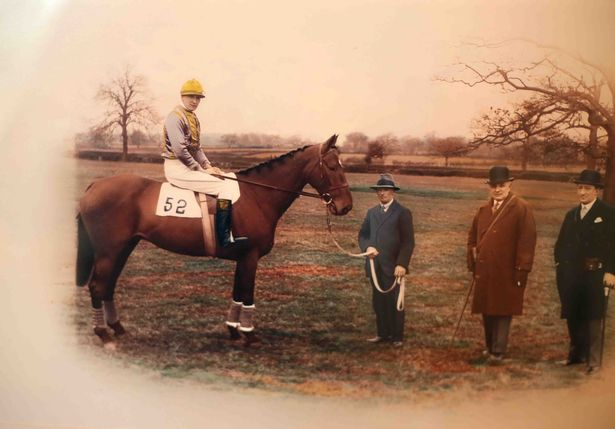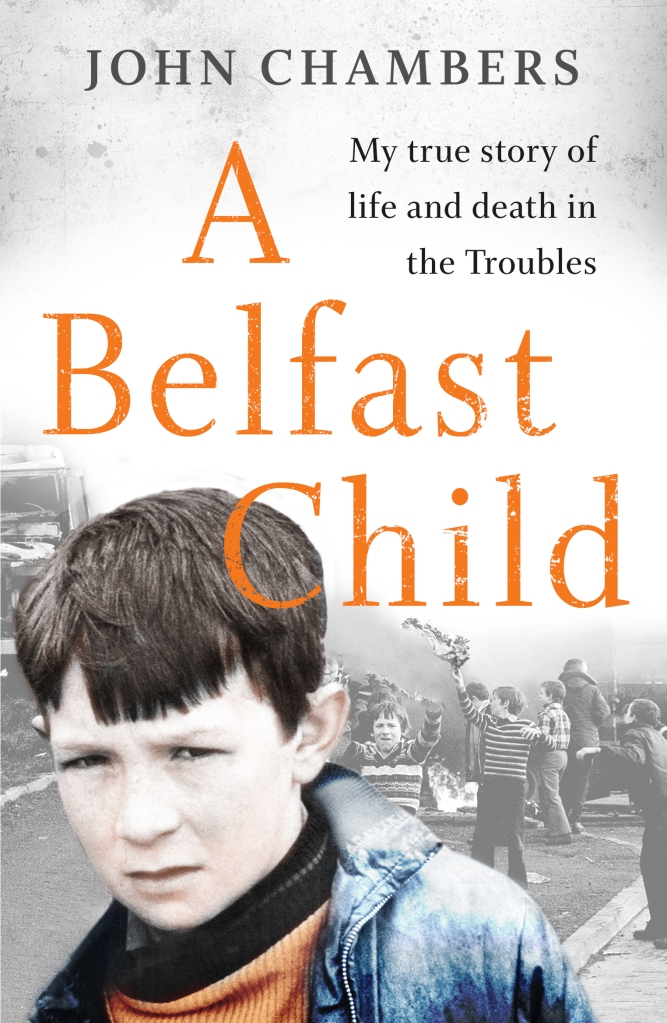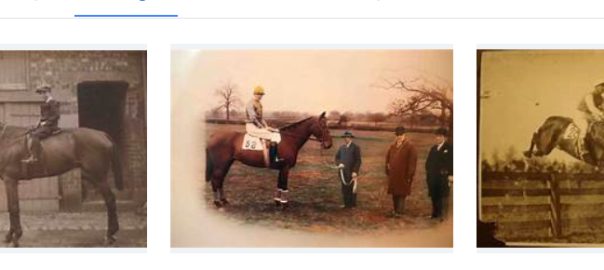Tipperary Tim
Astounding 1928 Grand National winner at 100/1 & a proud resident of Glencairn !


Tipperary Tim (foaled 1918) was an Irish Thoroughbred racehorse that won the 1928 Grand National. He was foaled in Ireland and was a descendant of the undefeated St. Simon.
Tipperary Tim was owned by Harold Kenyon and trained in Shropshire by Joseph Dodd. He was regarded as a fairly slow horse, but one who rarely fell. Tipperary Tim was a 100–1 outsider at the 42-runner 1928 Grand National, which was run in foggy conditions and very heavy going.
A pile-up occurred at the Canal Turn jump that reduced the field to just seven horses. Other falls and incidents left only Tipperary Tim and the 33-1 Billy Barton in the race. Billy Barton struck the last fence and fell, leaving Tipperary Tim to win – Billy Barton’s jockey remounted and finished a distant second (and last). The incident led to controversy in the press who complained that a Grand National should not be won merely by avoiding accident. It led to changes to the course with the ditch at Canal Turn being removed for the following year’s race. Tipperary Tim enjoyed no real success in other races.
Early life
Tipperary Tim was foaled in Ireland in 1918, his breeder was J.J. Ryan. Tipperary Tim’s sire was the British horse Cipango and his dam was the Irish horse Last Lot, his grandsire was the British horse St Frusquin (who had been sired by the undefeated St. Simon) and his damsire was British horse Noble Chieftain. He belonged to Thoroughbred family 19-b.
The stud fee paid for Cipango was just £3 5s (equivalent to £153 in 2020). Tipperary Tim was named after a local marathon runner, Tim Crowe. He was a brown-coloured gelding.[1] Tipperary Tim had been sold as a yearling for £50 (equivalent to £2,349 in 2020) and was said to have once been given as a present.
Tipperary Tim came into the ownership of Harold Kenyon. He was trained in Shropshire by Joseph Dodd who noted that “he never falls”. By other reports he was capable of only one pace, and that a relatively slow one. Tipperary Tim was tubed, that is he received a permanent tracheotomy, with a brass tube halfway down his neck to improve his breathing. He was stabled at Fernhill House in Belfast. Tipperary Tim competed at Aintree in the November 1927 Molyneux Steeplechase.

1928 Grand National
Tipperary Tim was entered into the 1928 Grand National at the age of 10 years. He was ridden by amateur jockey Bill Dutton, a Cambridge-educated solicitor from Chester, who had left the profession to pursue horse-riding. Tipperary Tim was a 100–1 outsider and Dutton later recalled that a friend had told him before the race:
“you’ll only win if all the others fall”.
The field in 1928 was the largest to date with 42 runners starting the race. The going was very heavy and there was a dense fog. There were three false starts, after which the broken starting tape had to be knotted together. On the first circuit of the Aintree track the leader, one of the favourites, Easter Hero, mistimed the Canal Turn jump.
Rising too early he was stranded briefly on the fence before becoming trapped in the ditch, which preceded it. The next three horses, Grokle, Darracq and Eagle’s Tail were brought down by Easter Hero. Of the remaining runners (22 remained in the race), twenty refused to jump the fence. The pile-up was described by racing historian Reg Green as “the worst ever seen on a racecourse”.
Only seven horses with seated jockeys emerged from the incident to continue the race. One of these was Tipperary Tim as Dutton had chosen to take a wide route around the outside of the course, avoiding hazards that had brought down other jockeys. Because of the fog the majority of the audience were unaware of the incident at Canal Turn.
By the second jumping of Becher’s Brook only five horses remained in the race with Billy Barton leading ahead of May King, Great Span, Tipperary Tim and Maguelonne. Maguelonne was still trailing at the first fence following Valentine’s Brook where it fell. May King fell shortly afterwards before Great Span lost his saddle and rider, leaving only Billy Barton, who started with 33–1 odds, and Tipperary Tim.
Billy Barton had led the race for 2.5 miles (4.0 km) until the last fence where Tipperary Tim drew level. The riderless Great Span was between them and may have slightly hindered Billy Barton. Billy Barton struck the final fence with his forelegs and fell, dismounting his rider, Tommy Cullinan. Tipperary Tim came in first, with a time of 10 minutes 23.40 seconds, he was closely followed by the riderless Great Span; a remounted Billy Barton came a distant second and was the last to finish.
With only two horses completing the race the 1928 Grand National set a second record, for the fewest finishers. Tipperary Tim was the only horse to have completed the race without falling or unseating its rider. Kenyon received prize money of 5,000 sovereigns as well as a cup worth 2,000 sovereigns. Tipperary Tim became one of the biggest outsiders to win the Grand National, only three other horses with odds of 100–1 have won the race: Gregalach in 1929, Caughoo in 1947 and Foinavon in 1967.
There were scathing reports in the press, which described the race as “burlesque steeplechasing”, and many writers stated that a Grand National should not be won merely by avoiding an accident. The race inspired some to become involved in the sport. The future horse racing commentator Peter O’Sullevan laid his first ever bet on Tipperary Tim and cited it as the start of his life-long connection with racing. The Pathé footage of the race inspired a young Beltrán Alfonso Osorio to aspire to a career in racing. He became an amateur jockey who rode at the 1952 Grand National and others thereafter .
The World’s Greatest Race (1928)
The success of Tipperary Tim led to larger fields in the following Grand Nationals. According to racing historian T. H. Bird “everyone who owned a steeplechaser that could walk aspired to win the Grand National”, leading to more entries which, Bird lamented, “cluttered” the field with “rubbish”.
The 1929 Grand National started with 66 runners, including Tipperary Tim who, despite his success the previous year, remained a 100-1 outsider. The ditch at the Canal Turn had been removed before this race, as a result of the incident in 1928. Tipperary Tim fell during the 1929 race and did not finish. The horse enjoyed no real success aside from his 1928 Grand National win.
Main source Wikipedia
Grand National News : Tipperary Tim
The Mirror : The amazing story of Tipperary Tim and the Grand National’s biggest ever upset
If you’ve read my book you’ll know I write about this legendary horse and my childhood spent playing in and around Fernhill House.
See below for extracts.
Dad pointed to an old and imposing big house up the top end of a driveway in Glencairn Park. ‘This is Fernhill House, and it’s where Lord Carson inspected the UVF men before they went off to war.’
‘To fight the Provies?’ I asked. I was only six, but already the language of the Troubles had begun to filter through my vocabulary. The ‘Provies’ were the Provisional Irish Republican Army – the enemy currently engaged in warfare with the British Army and bombing buildings in Belfast, Londonderry and many other places, killing soldiers, police officers and innocent civilians alike, and the UVF stood for the Ulster Volunteer Force, which was better known as a Loyalist paramilitary group during the Troubles.
‘Nah,’ said Dad, laughing, ‘not them. The UVF went off to fight the Germans in the First World War. Have you heard of the 36ththirty-sixth?’
I hadn’t, so Dad gave me a quick history lesson. The 36th Ulster Division were the pride of Protestant Belfast (although many Catholics fought in it too) and distinguished itself at the first day of the Battle of the Somme. Dad used to quote the words of Captain Wilfred Spender, who watched as the 36th Division went over the top: ‘I am not an Ulsterman but yesterday, the first of July, as I followed their amazing attack, I felt that I would rather be an Ulsterman than anything else in the world.’
Even today, I feel an enormous sense of prised pride when I hear those words.
I loved these kinds of stories, especially about our grandfathers and great-grandfathers who’d been so brave in the face of almost certain death. In fact, my great Uncle Robert fought and tragically died two weeks before the end of the war.
‘Are the UVF still around, Da’?’ I asked, wide-eyed. I hoped they were, as I recalled the rioting and burning I was told was the work of Catholics out to get us.
‘So they are, son,’ Dad said, ‘but hey, let’s not talk about all that now. C’mon with me now and we’ll get a pastie supper.’
I jumped up and down with delight. Pastie suppers were (and still are) my favourite. Only Northern Ireland people can appreciate the delights of this deep-fried delicacy of minced pork, onions and spuds, all coated in delicious batter, with chips on the side and a Belfast Bap (a bread roll).
As we walked from the brow of the hill down to the chippy, Dad told me a few more stories about Fernhill House. It was owned by a family called Cunningham, he said, and it had stables attached to it. In one of these was housed a racehorse called Tipperary Tim. and according to legend, the horse’s jockey, William Dutton was told by a friend, ‘Billy boy, you’ll only win if the all the others fall.’
‘Sure enough,’ said Dad, ‘yer man Dutton took the horse into the Grand National in Liverpool and all the other horses fell down. And so Tipperary Tim won the race.’
‘That’s amazing!’ I shouted. ‘Does he still live in the stables? Can we go and see him? Please, Da ’ . . .’
In response, my dad laughed. ‘You’re a bit late, son,’ he said., ‘the race was won in 1928!’
In time, Fernhill House and the surrounding area would become my childhood playground and I’d spend hours playing in the park and exploring the empty mansion and its cavernous cellars. Years later, when the Loyalists called their ceasefire as part of the Good Friday Agreement, legendary Loyalist leader Gusty Spence and the ‘Combined Loyalist Military Command’ choose Fernhill House to tell the world their war was at an end and offer abject and sincere remorse to their victims.
See below to order a copy.


Click here to buy on Amazon : A Belfast Child by John Chambers
If you would like a signed copy email me for details .


Reblogged this on seachranaidhe1.
LikeLike